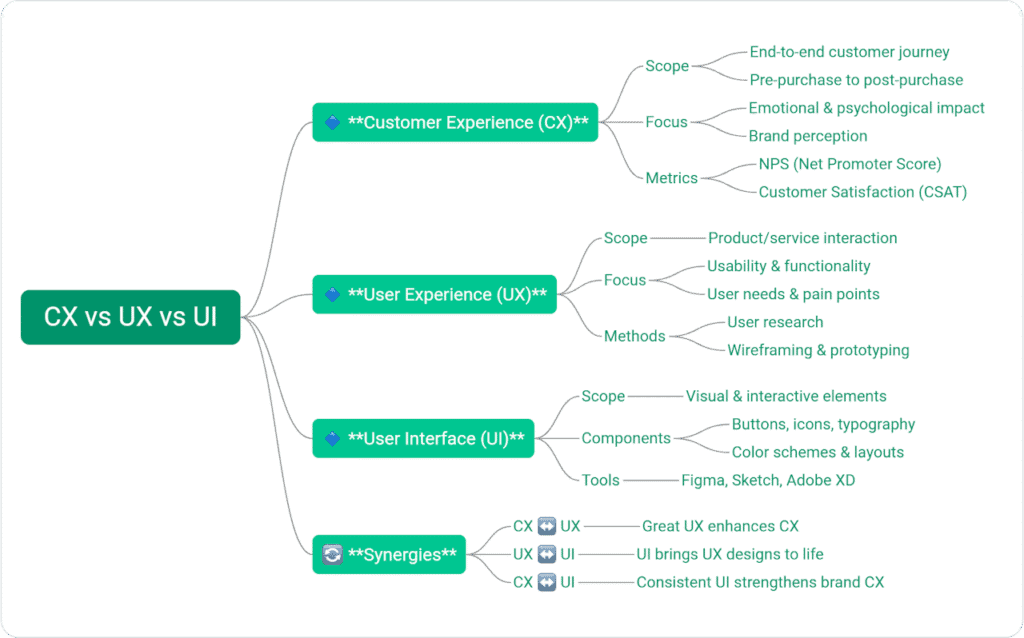Unlocking the Essentials of User Intent in Digital Marketing Strategies
Defining User Intent and Its Critical Role in Marketing Success

Prioritizing user intent over mere keyword stuffing is essential for effective digital marketing. User intent signifies the core purpose behind a user’s search query, which is a key concept in both SEO and successful digital marketing strategies. By accurately interpreting user intent, businesses can create content that is not only relevant but also aligned with the needs of their audience, thereby enhancing user satisfaction. Understanding user intent allows businesses to craft content that fulfills its intended purpose, whether it aims to inform, entertain, or persuade. The primary categories of user intent include:
- Informational: Users seek knowledge or answers to specific questions.
- Navigational: Users aim to find a particular website or webpage.
- Transactional: Users are prepared to make a purchase or complete a transaction.
- Commercial Investigation: Users are comparing products or services with an intent to purchase soon.
- Local: Users look for services or products within a specific geographical area.
Grasping these categories is vital for developing engaging content that resonates with your target audience, thus enhancing both user interaction and search engine visibility.
Ready to Dive Deeper into User Intent?
Strategies to Accurately Identify User Intent
Accurately determining user intent requires a comprehensive approach that includes analyzing search queries, user behavior, and the characteristics of the Search Engine Results Page (SERP). Utilizing powerful tools such as Google Analytics and Search Console can provide invaluable insights into how users interact with your content. By examining the keywords that drive traffic, one gains a clearer understanding of what users genuinely seek. For instance, a high volume of searches for “best hiking trails” indicates an informational intent, while searches like “buy hiking boots” reveal transactional intent.
Employing keyword analysis tools can deepen this understanding by uncovering the contexts in which specific keywords are used. Additionally, examining user behavior metrics such as average session duration and bounce rates offers critical insights into whether your content meets user expectations. This data-driven approach ensures that content creation is not only comprehensive but also aligned with users’ authentic needs.
The Importance of User Intent in Achieving SEO Success
The importance of understanding user intent in SEO cannot be overstated. By centering their strategies around user intent, businesses can achieve higher engagement rates, improved conversion metrics, and enhanced search engine rankings. Content that aligns with user intent fosters a positive user experience, a crucial element in the algorithms employed by search engines. When users quickly discover the information they seek, they are more likely to remain on the site longer, engage more deeply with the content, and ultimately convert.
Furthermore, search engines like Google are increasingly favoring content that reflects user intent. This evolution highlights the need for businesses to comprehend and incorporate user intent into their SEO strategies. Companies that prioritize user intent over traditional keyword stuffing frequently experience increased organic traffic and reduced bounce rates, fostering greater brand loyalty and trust.
Effective Techniques for Content Optimization Based on User Intent

Crafting Content That Resonates with User Intent
Creating content that directly aligns with user intent is crucial for enhancing both engagement and satisfaction. This process entails not only addressing user inquiries but also providing comprehensive solutions that resonate with their needs. Effective content creation strategies include:
- In-depth Research: Gain a thorough understanding of the subject matter to deliver accurate and valuable information.
- Audience Analysis: Identify and comprehend the needs and preferences of your target audience to tailor content accordingly.
- Clear Structure: Utilize headings, subheadings, and bullet points to enhance readability and organization.
- Visual Elements: Incorporate images, videos, or infographics to complement the textual content and engage users visually.
- Calls to Action: Integrate clear calls to action that guide users through their next steps, enhancing interaction and conversion opportunities.
By applying these strategies, content creators can ensure their work not only attracts visitors but also retains them effectively. This approach fosters a more satisfying user experience, which is vital for achieving higher rankings in search results.
Effective Keyword Utilization for Enhanced Relevance
While keywords remain a cornerstone of SEO, their role has evolved significantly. Rather than being the sole focus of content, keywords should now complement user intent and guide users to relevant information. Effective keyword utilization involves seamlessly integrating keywords throughout the content, ensuring they enhance rather than detract from the overall message.
A practical approach is to concentrate on long-tail keywords that reflect specific user queries. Instead of targeting a broad term like “shoes,” a more user-intent-focused keyword could be “best hiking shoes for wet conditions.” This specific focus not only aligns more closely with user searches but also mitigates competition. Moreover, strategically placing keywords in crucial areas such as headings, meta descriptions, and image alt texts can increase visibility without falling into the trap of keyword stuffing.
Leveraging Search Intent Data for Strategic Content Development

Utilizing insights from user search behavior can significantly enhance content strategy and relevance. Tools such as Google Trends and keyword planners provide valuable information about what users are currently searching for on a global scale. By analyzing this data, businesses can identify emerging trends and adapt their content strategies accordingly.
For instance, if data shows an increase in searches for “eco-friendly travel options,” companies in the travel sector can generate targeted content to address this growing interest. Additionally, employing social listening tools can unveil user sentiments and preferences, enabling brands to tailor their messaging more effectively to meet audience expectations. Integrating data-driven insights into content planning not only enhances relevance but also positions the brand as a trusted authority in its industry.
Enhancing User Experience to Meet User Intent
Improving site navigation and overall user experience is essential for aligning content with user intent. A seamless user experience promotes satisfaction and encourages greater engagement with the content. Key strategies for enhancing user experience include:
- Intuitive Navigation: Establish a logical and user-friendly site structure that guides users effortlessly.
- Fast Load Times: Optimize site speed to minimize waiting times for users, enhancing their experience.
- Mobile Responsiveness: Ensure the site functions optimally across all devices, particularly smartphones, to cater to mobile users.
- Interactive Features: Incorporate elements like quizzes or calculators that engage users more deeply.
- Consistent Branding: Maintain a coherent visual and messaging approach across all pages to build brand recognition.
By focusing on these aspects, businesses can cultivate a more engaging environment that meets user expectations and encourages deeper interaction. This strategy not only boosts user satisfaction but also positively impacts SEO performance.
Monitoring and Adapting to Changes in User Intent
Regularly reviewing search data and user feedback is essential for adapting content strategies to maintain relevance. User intent can evolve due to changing trends, cultural shifts, or technological advancements, making it crucial for businesses to remain agile. Utilizing analytics tools to track user behavior provides insights into how well current content meets user needs.
Moreover, actively soliciting user feedback through surveys or comment sections can reveal areas needing improvement. This proactive approach enables businesses to refine their content in real-time, ensuring alignment with user intent and preferences. For example, if user feedback indicates confusion around a specific topic, revisiting and enhancing that content can significantly improve clarity and satisfaction. This adaptability not only boosts SEO performance but also fosters a loyal user base.
Insights from Experts on Prioritizing User Intent Over Keyword Stuffing
Real-Life Examples of Successful User Intent Optimization
Real-world case studies effectively illustrate the tangible benefits of optimizing for user intent. For instance, a leading e-commerce platform faced a noticeable decline in conversion rates due to an overwhelming focus on generic keywords. By shifting their strategy to emphasize user intent, they began crafting content tailored to specific customer inquiries, such as “sustainable fashion options.” This pivotal change not only increased organic traffic but also resulted in a remarkable 30% increase in conversion rates within six months.
Another example involves a travel blog that transitioned from keyword-heavy posts to content centered around user intent. By analyzing the motivations behind user queries, the blog produced articles showcasing unique travel experiences based on user interests. As a result, engagement metrics soared, with average session duration increasing by 50%, demonstrating the effectiveness of their new strategy.
- E-commerce success: Transitioning to a user intent-focused approach led to a remarkable increase in conversions.
- Travel blog transformation: Concentrating on unique user interests significantly enhanced engagement metrics.
- Health website case: Customized content resulted in improved user satisfaction and reduced bounce rates.
- Financial services example: Aligning content with user queries fostered greater trust and authority.
These examples underscore that prioritizing user intent over arbitrary keyword usage can lead to substantial results, enhancing both user satisfaction and SEO performance.
Actionable Steps for Implementing User Intent Strategies
Implementing user intent optimization strategies can be straightforward when approached methodically. Here’s a step-by-step guide to help practitioners integrate user intent into their SEO initiatives:
1. Conduct Keyword Research: Use tools like Google Keyword Planner and SEMrush to identify keywords that reflect user intent.
2. Analyse User Behaviour: Leverage analytics tools to understand how users interact with your current content and identify drop-off points.
3. Create Targeted Content: Develop content that directly addresses user queries, ensuring it aligns with the identified user intent.
4. Optimise On-Page Elements: Ensure titles, headings, and meta descriptions naturally incorporate target keywords while focusing on user intent.
5. Monitor Performance: Use metrics such as bounce rates and dwell time to assess how well the content meets user needs.
6. Adjust Based on Feedback: Regularly solicit user feedback and utilize this data to refine content and strategies accordingly.
By following these steps, businesses can effectively align their content strategy with user intent, leading to increased engagement and improved SEO outcomes.
Impact of User Intent on SEO Performance
User intent significantly influences SEO performance, shaping how content is created and optimized. As search engines increasingly prioritize user satisfaction, focusing on user intent enables businesses to align their offerings more closely with user needs. This alignment translates into improved search rankings, as search engines reward content that effectively addresses user queries.
Moreover, understanding user intent allows for the creation of more relevant and engaging content, resulting in higher click-through rates and lower bounce rates. When users find the information they seek quickly, they are more likely to remain on the site, interact with additional content, and ultimately convert.
The long-term advantages of a user intent-focused strategy are substantial. Brands that consistently deliver content aligned with user intent build authority and trust, which are critical factors for sustained SEO success. As user expectations evolve, the ability to adapt and respond to changing intent not only enhances immediate performance but also secures a competitive edge in the digital landscape.
Evaluating the Results of User Intent Optimization
Key Metrics to Track for Measuring Effectiveness
Monitoring specific metrics is vital for understanding how well content aligns with user intent. Key metrics to observe include:
- Bounce Rate: Indicates the percentage of users who leave the site after viewing only one page, suggesting whether content meets user expectations.
- Dwell Time: Measures the duration of time users spend on a page before returning to search results, indicating content engagement.
- Conversion Rates: Reflect the percentage of visitors who complete desired actions, showcasing the effectiveness of aligning content with user intent.
- Click-Through Rate (CTR): The percentage of users who click on a link, indicating the effectiveness of titles and descriptions.
- Pages per Session: Reveals how many pages users visit in one session, suggesting their level of engagement.
Regularly reviewing and analyzing these metrics enables businesses to gauge the effectiveness of their user intent optimization strategies and make informed decisions for future content development.
How User Intent Optimization Influences SEO Rankings
Optimizing for user intent profoundly impacts SEO rankings, as search engines prioritize content that effectively addresses user queries. When businesses create content that aligns with user needs, it enhances the overall user experience, leading to increased dwell time and reduced bounce rates—factors that search engines consider when ranking pages.
Moreover, as search engines advance, they increasingly employ sophisticated algorithms that assess the relevance and quality of content. Therefore, content that answers specific user queries meaningfully is more likely to rank higher in search results. In contrast, keyword-stuffed content may result in poorer engagement and could be penalized by search engines, leading to decreased visibility.
In essence, aligning content with user intent not only enhances the immediate user experience but also promotes long-term SEO success, ensuring sustained visibility in search engine results.
Tools for Measuring User Intent Effectiveness
To effectively measure the impact of user intent optimization strategies, a variety of tools are available that can provide valuable insights. These include:
- Google Analytics: Offers comprehensive data on user behaviour, including bounce rates, session duration, and conversion rates.
- Heatmaps: Tools such as Hotjar or Crazy Egg visually represent where users click, scroll, and spend time on a page.
- A/B Testing Tools: Platforms like Optimizely and VWO enable businesses to test different versions of content to determine which performs better with users.
- SEO Analytics Platforms: Tools such as SEMrush and Ahrefs provide insights into keyword performance, backlink analysis, and content optimization suggestions.
- Surveys and Feedback Tools: Collecting user feedback through platforms like SurveyMonkey can provide direct insights into user satisfaction and the effectiveness of content.
Utilizing these tools not only aids in measuring the effectiveness of user intent strategies but also informs future content development, ensuring alignment with evolving user expectations.
Case Studies Highlighting Success in User Intent Optimization
Examining real-world examples of user intent optimization reveals valuable insights regarding its impact on engagement and conversions. One notable instance involved an online education platform that initially faced high bounce rates and low engagement. After conducting a thorough analysis, they found that their content was too broad and did not adequately address the specific needs of their users.
By refocusing on user intent, they developed targeted content around common queries such as “best online courses for beginners” and “advanced courses in data science.” This strategic shift resulted in a 40% increase in user engagement and a 25% rise in course enrollments within three months.
Another case study features a local restaurant that relied heavily on keyword stuffing in its website content. By refocusing their strategy to prioritize user intent, they crafted content that highlighted their unique offerings, such as organic ingredients and special dietary options. Consequently, their online reservations surged by 60%, showcasing the effectiveness of aligning content with user intent.
These case studies demonstrate that focusing on user intent not only enhances user satisfaction but also leads to significant improvements in both engagement and conversion rates.
The Long-Term Benefits of Emphasizing User Intent
Prioritizing user intent offers numerous long-term benefits that extend far beyond immediate SEO gains. By consistently aligning content with user needs, businesses foster a strong sense of trust and authority among their audience. This trust is essential for long-term customer loyalty, as users are more likely to return to brands that consistently deliver value.
Additionally, a user intent-centric strategy often yields higher engagement rates, as users discover relevant and useful content that resonates with their inquiries. This heightened engagement not only enhances SEO performance but also improves brand visibility and reputation within a competitive digital landscape.
Moreover, as businesses adapt to fluctuating user expectations and preferences, they become more agile and better positioned to seize new opportunities. This adaptability ensures sustained success, as the capability to respond to user intent effectively will remain a critical factor in achieving long-term SEO objectives.
Avoiding Common Pitfalls in User Intent Optimization
The Consequences of Overlooking User Intent in Content Creation
Neglecting to consider user intent during content creation can lead to the production of irrelevant or unhelpful material that fails to meet users’ needs. This oversight can result in higher bounce rates, decreased engagement, and ultimately, a decline in SEO performance. When content does not align with user expectations, users are likely to abandon the site in search of more pertinent information.
Moreover, overlooking user intent can prevent businesses from capitalizing on valuable opportunities to engage their audience. For example, crafting content that is excessively technical or laden with jargon may alienate users seeking straightforward answers. Therefore, comprehending and prioritizing user intent is vital for creating content that resonates and drives tangible results.
Consequences of Ignoring User Intent in Strategy
Disregarding user intent can lead to detrimental consequences, ranging from low engagement and poor conversion rates to decreased SEO performance. When content fails to align with user needs, it lacks value, leading to user frustration and abandonment. Users who cannot find the information they seek are likely to exit quickly, resulting in high bounce rates that can negatively impact search engine rankings.
Additionally, neglecting user intent can hinder a brand’s ability to establish authority and trust within its niche. Content that consistently misses the mark fosters a perception that the brand does not understand or care about its audience. This perception can inflict long-term damage on the brand’s reputation, highlighting the critical need to prioritize user intent in all content efforts.
Strategies to Avoid Keyword Stuffing While Focusing on User Intent
Balancing keyword usage with a focus on user intent requires careful planning and execution. To avoid the pitfalls of keyword stuffing, businesses should adopt a more organic approach to incorporating keywords into their content. This involves understanding the context in which keywords are used and ensuring they enhance the content rather than detract from it.
One effective method is to utilize synonyms and related terms that reflect the same user intent, allowing for a more varied and engaging reading experience. Additionally, employing long-tail keywords can facilitate the creation of content that is more specific and relevant to users’ queries, thus reducing the inclination to overuse primary keywords. Regularly reviewing content and making adjustments based on user feedback and engagement metrics can also help maintain a focus on user intent while avoiding the pitfalls of keyword stuffing.
Research-Backed Benefits of User Intent Optimization Over Keyword Stuffing
Studies Indicating Enhanced User Engagement Through Intent Optimization
Research indicates that content optimized for user intent experiences significantly higher engagement and satisfaction rates. For example, studies have demonstrated that pages answering specific user questions tend to exhibit lower bounce rates and longer dwell times. This suggests that when users encounter content that aligns with their needs, they are more likely to engage with it.
Moreover, businesses that prioritize user intent over conventional keyword strategies often report improved user experience metrics. By focusing on what users genuinely desire, brands can create content that resonates, resulting in more effective interactions. Examples of studies highlighting these trends include research from industry insiders, which indicates that user-centric content can double engagement rates compared to keyword-stuffed content.
- Increased Dwell Time: Research reveals a direct correlation between user intent alignment and dwell time.
- Lower Bounce Rates: Pages tailored to user needs experience fewer users abandoning the site.
- Higher Return Visits: Content addressing user intent encourages users to return for additional information.
- Better Social Shares: Engaging content is more likely to be shared across social media platforms.
These studies highlight the importance of prioritizing user intent, illustrating that it leads not only to improved engagement but also to greater customer loyalty.
Conversion Rates Related to User Intent: The Data
Data suggests that aligning content with user intent can substantially enhance conversion rates. When users quickly find what they are searching for, they are more likely to complete desired actions, whether that be making a purchase, signing up for a newsletter, or engaging with additional content. Studies indicate that websites focusing on user intent can experience conversion rate increases of up to 75%, as users feel more understood and valued.
Furthermore, analyzing user behavior data allows businesses to identify which content correlates with higher conversion rates. This understanding enables targeted efforts to enhance content that aligns with user intent, resulting in sustained improvements in conversion performance. Such data-driven insights reinforce the necessity of a user-centered approach to content strategy.
Long-Term SEO Advantages of Prioritizing User Intent
Focusing on user intent yields immediate improvements in engagement and satisfaction while also delivering long-term SEO advantages. As search engines evolve, they increasingly favor content that genuinely addresses user queries and needs. Thus, businesses that invest in understanding and aligning with user intent are likely to experience sustained improvements in their search rankings.
Moreover, user intent-focused content nurtures a loyal user base, as satisfied users are more inclined to return and recommend the site to others. Over time, this leads to increased organic traffic and a stronger online presence. Additionally, as businesses continue to adapt their strategies to meet evolving user expectations, they become more resilient and capable of navigating changes in search algorithms, thereby ensuring long-term SEO success.
Practical Applications of User Intent Optimization
Case Studies Demonstrating Successful User Intent Strategies
Real-world examples underscore the effectiveness of user intent optimization across various sectors. One notable case involved a financial services company that faced high drop-off rates on its website. By recognizing the need to align their content with user intent, they conducted extensive research to understand common user queries regarding financial products.
By restructuring their content to focus on these questions, they created informative guides and comparison articles that directly addressed user concerns. This strategic pivot led to a 50% decrease in bounce rates and a notable increase in lead generation, underscoring the effectiveness of aligning content with user intent.
Another example features a fitness app that initially relied on broad marketing strategies. After analyzing user intent data, they discovered that users were seeking personalized workout plans. By introducing content that addressed these specific needs, the app realized a 60% uptick in user sign-ups and engagement, showcasing how tailored content can drive substantial growth.
- Financial services success: Aligning content with user intent led to improved engagement and lead generation.
- Fitness app transformation: Tailoring content for personalization significantly increased user sign-ups.
- E-commerce case: Redefining user queries resulted in higher conversion rates.
- Travel industry example: Focusing on user experiences enhanced engagement metrics.
These case studies highlight the critical role of user intent in driving effective content strategies that yield positive results.
Industry-Wide Implementation of User Intent Strategies
User intent optimization can be implemented across diverse industries and content types, offering numerous opportunities to enhance engagement and conversions. In the e-commerce sector, for example, businesses can create detailed product guides that align with customer inquiries, ensuring they directly address user concerns. This strategy not only engages potential buyers but also helps build trust and improve conversion rates.
In the travel industry, companies can focus on creating content that showcases unique experiences tailored to user preferences, such as sustainable travel options or family-friendly destinations. By aligning content with user intent, travel businesses can attract more visitors and encourage bookings.
Furthermore, in the healthcare sector, providing informative articles about common medical concerns or treatment options can significantly enhance user trust and engagement. By tailoring content to the questions users are asking, healthcare providers can bridge the information gap and foster stronger relationships with their audience.
Overall, practical applications of user intent optimization demonstrate its versatility and effectiveness across various sectors, ensuring that businesses can meet user needs while achieving their objectives.
Adapting User Intent Strategies for Various Content Types
Adapting user intent strategies requires a tailored approach that is specific to the type of content being created. For blog posts, emphasizing the provision of in-depth, informative content that answers user queries is essential. This may involve employing structured formats, such as lists or how-to guides, to enhance readability and engagement.
In contrast, product pages should prioritize concise, impactful content that highlights key features and benefits. Incorporating user testimonials and reviews can also bolster credibility and directly address potential buyer concerns.
For multimedia content, such as videos or podcasts, understanding user intent can guide the creation of topics that resonate with the audience. For instance, tutorial videos that address common user pain points can help improve viewer engagement and cultivate a devoted audience.
By recognizing the nuances of different content types and adjusting strategies accordingly, businesses can effectively align their content with user intent, ultimately driving engagement and conversions.
Measuring the Impact of User Intent Optimization
Measuring the effectiveness of user intent optimization strategies involves tracking specific metrics and using analytical tools to assess user behavior. Key performance indicators (KPIs) to monitor include:
- Bounce Rates: A decrease in bounce rates suggests that users are finding relevant content that meets their needs.
- Dwell Time: Increased dwell time indicates that users are engaging with the content more deeply, which is a sign of effective user intent alignment.
- Conversion Rates: Monitoring conversion rates enables businesses to assess the effectiveness of their content in prompting desired actions.
- Social Shares and Engagement: Tracking how frequently users share content can signify its relevance and effectiveness.
- Referral Traffic: An increase in organic search traffic or referrals from social media can indicate better alignment with user intent.
Utilizing tools such as Google Analytics, heatmap software, and A/B testing platforms can provide insights into these metrics, allowing businesses to continually refine their strategies. By regularly measuring the impact of user intent optimization, brands can ensure they remain responsive to user needs and achieve long-term success.
Best Practices for Ongoing User Intent Optimization
Continuous user intent optimization necessitates a proactive approach to refining content strategies and ensuring alignment with evolving user needs. Some best practices include:
- Regularly Update Content: Refresh existing content to include updated information and address new user queries that may arise.
- Conduct Ongoing Keyword Research: Regularly analyze search trends to identify shifts in user intent and adjust content accordingly.
- Solicit User Feedback: Encourage users to provide feedback on content to highlight areas for improvement and better align with their needs.
- Monitor Competitor Strategies: Keep an eye on competitors’ content strategies to identify gaps and opportunities for differentiation.
- Implement A/B Testing: Utilize A/B testing to evaluate various content variations and determine which one resonates best with users.
By adhering to these best practices, businesses can ensure their content remains relevant and continues to align with user intent, ultimately driving sustained engagement and conversion success.
Future Trends in User Intent Optimization
Emerging Technologies Shaping User Intent Understanding
Emerging technologies, particularly AI and machine learning, are revolutionizing the understanding and optimization of user intent. These innovations empower businesses to analyze vast amounts of data to identify patterns in user behavior and preferences. Consequently, companies can create more personalized content that directly aligns with individual user intent.
For instance, AI-driven tools can assess user interactions to predict future behaviors, allowing businesses to tailor content and recommendations accordingly. This level of personalization enhances user experience and fosters deeper connections between brands and their audiences. Additionally, chatbots and virtual assistants are increasingly leveraged to provide instant responses to user queries, further aligning with user intent in real-time.
As these technologies continue to advance, their integration into content strategies will become increasingly essential for businesses aiming to maintain a competitive edge.
The Next Major Trend in User Intent Optimization
The upcoming trend in user intent optimization is likely to focus on hyper-personalization. As AI technology evolves, businesses will be able to deliver content that is not only relevant but also customized to individual user preferences and behaviors. This shift will necessitate brands to invest in advanced data analytics and user segmentation strategies to gain a comprehensive understanding of their audiences.
Moreover, voice search is expected to play a pivotal role in shaping how user intent is interpreted. As more individuals rely on voice-activated devices for their searches, content strategies will need to adapt to accommodate conversational queries and long-tail keywords that reflect natural speech patterns. This evolution will further emphasize the importance of focusing on user intent as the primary driver of content creation.
The Impact of Voice Search on User Intent
Voice search is gaining prominence in understanding and optimizing for user intent. With the proliferation of smart devices and virtual assistants, users are increasingly utilizing voice commands for their searches. This shift alters how queries are formulated, often leading to longer, more conversational phrases that accurately reflect user intent.
To adapt to this trend, businesses must consider how their content can effectively answer voice search queries. This may involve optimizing for local search terms, creating FAQ-style content, or employing structured data to enhance visibility in voice search results. By addressing the unique characteristics of voice search, businesses can ensure they remain relevant and accessible to users seeking information through this medium.
The Influence of Personalization on User Intent Optimization
The future of user intent optimization will heavily involve personalisation, as users increasingly expect tailored experiences. As data analytics and AI technology advance, businesses will be able to create content that resonates directly with individual user preferences and behaviors. This level of personalization not only enhances user satisfaction but also drives higher engagement and conversion rates.
Furthermore, as privacy concerns continue to shape user expectations, businesses must find ways to balance personalization with respect for user data. Transparency in data collection and usage will be critical for building trust with users. By focusing on creating personalized, user-centric content that aligns with intent while respecting privacy, brands can foster lasting relationships with their audiences.
The Role of Augmented Reality in User Intent
Augmented reality (AR) is poised to transform how users interact with digital content, influencing how user intent is interpreted and optimized. As AR technology becomes more prevalent, businesses will have the opportunity to create immersive experiences that cater to user intent in innovative ways.
For instance, retailers can utilize AR to offer virtual try-ons for products, enhancing the shopping experience by enabling users to visualize items in real-time. This interactive approach aligns closely with user intent by providing practical solutions to common shopping dilemmas. As AR technology continues to evolve, its integration into content strategies will become increasingly vital for businesses aiming to engage users effectively.
Integrating User Intent Optimization into Your SEO Strategy
Key Steps to Incorporate User Intent into SEO Practices
Integrating user intent into SEO strategies involves a systematic approach that enhances the effectiveness of content. Key steps to follow include:
1. Conduct Comprehensive Keyword Research: Identify keywords that reflect user intent using tools like Google Keyword Planner and SEMrush.
2. Analyse User Behaviour Data: Utilize analytics tools to understand how users interact with current content and identify areas for improvement.
3. Create User-Centric Content: Develop content that directly addresses user queries and provides solutions, ensuring it aligns with identified user intent.
4. Optimise On-Page Elements: Incorporate target keywords naturally into titles, headings, and meta descriptions while maintaining a focus on user intent.
5. Monitor Performance Metrics: Regularly assess key performance indicators such as bounce rates, dwell time, and conversion rates to gauge content effectiveness.
6. Solicit User Feedback: Encourage users to share their thoughts on content to identify areas for improvement and better align with their needs.
By following these steps, businesses can effectively integrate user intent into their SEO strategies, resulting in improved engagement and performance.
Starting Your Journey Toward User Intent Optimization
Initiating user intent optimization involves immediate actions that can significantly enhance content relevance. Begin by analyzing your existing content to identify gaps where user intent may not be fully addressed. Use tools such as Google Analytics to assess user behavior and feedback to comprehend what users are searching for.
Next, conduct keyword research to identify relevant terms that accurately reflect user queries and align with their intended purpose. Start creating content that provides comprehensive answers to these queries, ensuring it is structured to enhance readability and engagement. Regularly review and revise content based on user feedback and performance metrics to ensure it remains aligned with evolving user needs and preferences.
By taking these initial steps, businesses can establish a strong foundation for a successful user intent optimization strategy that drives engagement and conversions.
Why Continuous Improvement in User Intent is Vital
Continuous improvement in user intent optimization requires an ongoing commitment to refining content strategies and ensuring alignment with changing user needs. Regularly updating content to reflect current trends and user preferences is essential for maintaining relevance.
Additionally, conducting periodic user feedback surveys can yield valuable insights into how well content meets user intent. Analyzing performance metrics, such as engagement rates and conversion statistics, can also help identify areas for improvement.
By fostering a culture of adaptability and responsiveness to user needs, businesses can ensure they remain at the forefront of user intent optimization, driving sustained engagement and SEO success over time.
Frequently Asked Questions About User Intent Optimization
What is user intent in SEO?
User intent refers to the motivation behind a user’s search query, which can be informational, navigational, transactional, or local. Understanding this concept enables businesses to create more relevant content that effectively meets user needs.
How can I identify user intent for my content?
Identifying user intent involves analyzing search queries, user behavior, and SERP features. Tools like Google Analytics can provide valuable insights into user interactions, thereby enhancing our understanding of their intentions.
Why is user intent important for SEO?
Focusing on user intent improves content relevance, increases engagement rates, and enhances SEO rankings by aligning content with what users are actively seeking.
What are effective strategies for optimizing for user intent?
Effective strategies encompass creating content that directly addresses user queries, using keywords naturally, utilizing search intent data, enhancing user experience, and monitoring changes in user intent.
How can I measure the impact of user intent optimization?
Key metrics to monitor include bounce rates, dwell time, conversion rates, and user feedback. These indicators provide insights into how well content aligns with user intent.
What are common mistakes in user intent optimization?
Common errors include overlooking user intent in content creation, failing to adapt to changes in user behavior, and relying excessively on keyword stuffing without considering user needs.
How does voice search affect user intent?
Voice search alters how queries are formulated, often leading to more conversational and longer phrases. This necessitates that businesses adjust their content strategies to cater to these types of searches effectively.
What role does personalization play in user intent optimization?
Personalization enables businesses to tailor content to individual user preferences, enhancing user experience and engagement by ensuring that content resonates with specific needs.
What are the long-term benefits of focusing on user intent?
Long-term advantages include improved brand authority, sustained user engagement, higher conversion rates, and enhanced SEO performance as businesses adapt to evolving user needs.
How can I start implementing user intent optimization today?
Begin by analyzing existing content, conducting keyword research, creating targeted content that addresses user queries, and continuously monitoring performance to ensure alignment with user intent.
Connect with us on Facebook!
The post Optimise for User Intent Over Keyword Stuffing appeared first on Ezi Gold.
The Article Optimize for User Intent Instead of Keyword Stuffing Was Found On https://limitsofstrategy.com
















